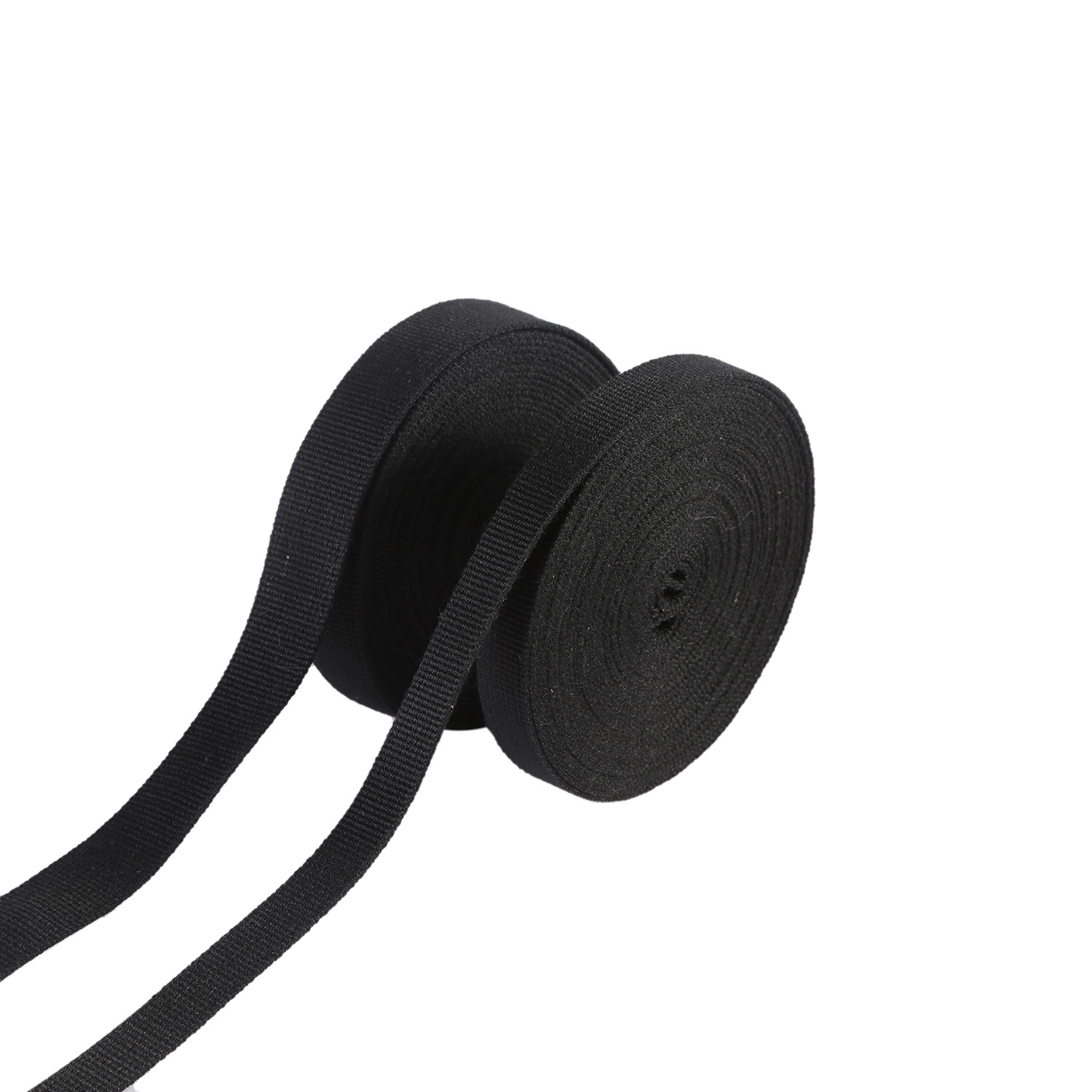Understanding the Manufacturing Process of Fireproof Webbing: A Comprehensive Guide
Understanding the Manufacturing Process of Fireproof Webbing
Table of Contents
Introduction to Fireproof Webbing
Importance of Fireproof Webbing in Various Industries
Raw Materials Used in Fireproof Webbing
The Weaving Process of Fireproof Webbing
Finishing Treatments for Fireproof Webbing
Quality Control in Fireproof Webbing Manufacturing
Testing Sta
Jul 16,2025

Understanding the Manufacturing Process of Fireproof Webbing
Table of Contents
- Introduction to Fireproof Webbing
- Importance of Fireproof Webbing in Various Industries
- Raw Materials Used in Fireproof Webbing
- The Weaving Process of Fireproof Webbing
- Finishing Treatments for Fireproof Webbing
- Quality Control in Fireproof Webbing Manufacturing
- Testing Standards and Certifications
- Future Trends in Fireproof Webbing Manufacturing
- Frequently Asked Questions
- Conclusion
Introduction to Fireproof Webbing
Fireproof webbing is a specialized type of textile designed to withstand high temperatures and prevent ignition. This product is primarily used in applications requiring fire resistance, such as safety harnesses, firefighting gear, and protective clothing. As industries increasingly prioritize safety standards, understanding the manufacturing process of fireproof webbing becomes essential.
What is Fireproof Webbing?
Fireproof webbing is engineered with unique properties to resist flames and high temperatures. It is typically made from high-performance fibers that are inherently fire-resistant or have been treated with fire-retardant substances. This makes it a critical component in various safety applications.
Applications of Fireproof Webbing
Fireproof webbing finds extensive applications in several industries, including:
- **Firefighting**: Used in firemen's gear to provide protection against heat and flames.
- **Industrial Safety**: Used in safety harnesses for workers in high-risk environments.
- **Aerospace**: Crucial for protective gear in aircraft manufacturing and maintenance.
- **Automotive**: Utilized in fire-resistant seatbelts and harnesses.
Importance of Fireproof Webbing in Various Industries
The significance of fireproof webbing is underscored by the increasing need for safety and compliance across various sectors. As regulations become stricter, industries are compelled to invest in materials that ensure worker safety and minimize fire hazards.
Enhanced Safety Measures
Employing fireproof webbing in safety gear significantly enhances protection against fire-related incidents, thus reducing the risk of injuries and fatalities in hazardous work environments.
Compliance with Regulations
Many industries are governed by strict safety regulations. Fireproof webbing helps companies meet these standards, ensuring both legal compliance and worker safety.
Raw Materials Used in Fireproof Webbing
The manufacturing of fireproof webbing involves a selection of specialized raw materials known for their fire-resistant properties. These materials include:
Aramid Fibers
Aramid fibers, such as Kevlar and Nomex, are renowned for their excellent heat and flame resistance. They form the backbone of many fireproof webbing products due to their high tensile strength and durability.
PBI (Polybenzimidazole) Fibers
PBI fibers offer outstanding thermal stability and resistance to flame. They provide significant protection against heat and are often used in high-temperature applications.
Fire-Retardant Treated Fabrics
Some webbing products are made from conventional fabrics that are treated with fire-retardant chemicals. These treatments enhance the fabric’s resistance to flames, although they may not provide the same level of protection as inherently fire-resistant fibers.
The Weaving Process of Fireproof Webbing
The weaving process is crucial in determining the final properties of fireproof webbing. This section outlines the various stages involved in the weaving process.
Yarn Preparation
The first step involves preparing the yarn, which includes spinning and twisting the raw fibers into yarn suitable for weaving. The choice of yarn density and thickness will influence the webbing’s strength and flexibility.
Weaving Techniques
Different weaving techniques can be employed to create fireproof webbing. Common methods include:
- **Plain Weave**: Offers a simple and effective weave suitable for many applications.
- **Twill Weave**: Provides better drape and flexibility, making it ideal for more complex applications.
- **Satin Weave**: Produces a smoother finish and is often used for applications requiring less friction.
Finishing Processes
After weaving, the webbing undergoes various finishing processes to enhance its performance characteristics. These may include heat setting, coating, and treatments to increase abrasion resistance or improve colorfastness.
Finishing Treatments for Fireproof Webbing
Finishing treatments are essential for improving the durability and functionality of fireproof webbing. These treatments can provide additional fire resistance, enhance chemical resistance, and improve overall performance.
Coatings and Treatments
Applying specialized coatings can increase the fireproof webbing's ability to repel water and other liquids, enhancing its usability in different environments.
Heat Setting
Heat setting involves applying heat to the woven fabric to stabilize its structure and enhance its dimensional stability. This process helps maintain the webbing's shape and integrity during use.
Quality Control in Fireproof Webbing Manufacturing
Ensuring the quality of fireproof webbing is vital to meet industry standards and regulations. Quality control measures cover several critical aspects of the manufacturing process.
Raw Material Inspection
All raw materials must undergo rigorous inspection to ensure they meet specified standards for fire resistance and durability. This helps prevent inferior materials from entering the production process.
In-Process Inspections
Regular in-process inspections during the weaving and finishing stages help identify and rectify any defects early in the manufacturing process.
Final Product Testing
Before reaching the market, fireproof webbing products must undergo comprehensive testing to verify their fire resistance, tensile strength, and overall quality.
Testing Standards and Certifications
Various standards govern the testing and certification of fireproof webbing. Understanding these standards is essential for manufacturers and consumers alike.
NFPA Standards
The National Fire Protection Association (NFPA) establishes guidelines for fire protection equipment and materials. Fireproof webbing must meet specific NFPA standards to be considered compliant.
ISO Certifications
International Organization for Standardization (ISO) certifications ensure that the manufacturing processes of fireproof webbing meet global quality standards.
ASTM Standards
The American Society for Testing and Materials (ASTM) provides additional testing standards that fireproof webbing manufacturers must adhere to for quality assurance.
Future Trends in Fireproof Webbing Manufacturing
As technology evolves, the manufacturing of fireproof webbing is poised to undergo significant advancements.
Innovations in Materials
New developments in fiber technology may lead to even more effective fire-resistant materials, improving performance while reducing weight.
Sustainability Initiatives
In response to growing environmental concerns, manufacturers are exploring sustainable practices in sourcing materials and production processes.
Smart Textiles
The integration of smart technology into fireproof webbing, such as sensors for monitoring temperature or structural integrity, is an exciting frontier that promises enhanced safety and functionality.
Frequently Asked Questions
1. What makes fireproof webbing different from regular webbing?
Fireproof webbing is specifically designed with materials that can withstand high temperatures and flames, whereas regular webbing may not provide such protection.
2. How is the fire resistance of webbing tested?
Fire resistance is tested using standardized methods, where samples are exposed to flame and heat to measure their ignition resistance and thermal stability.
3. Can fireproof webbing be used in outdoor applications?
Yes, fireproof webbing can be used in outdoor applications, especially when properly treated to resist environmental factors like moisture and UV exposure.
4. What industries benefit most from fireproof webbing?
Industries such as firefighting, aerospace, automotive, and industrial safety are among the primary beneficiaries of fireproof webbing due to their high safety requirements.
5. How should fireproof webbing be maintained?
Proper maintenance involves regular inspections for wear and tear, cleaning according to manufacturer recommendations, and following guidelines for storage to ensure longevity.
Conclusion
In summary, the manufacturing process of fireproof webbing is a complex and multifaceted journey that plays a vital role in enhancing safety across various industries. From the selection of high-performance raw materials to the intricate weaving and finishing processes, every stage is crucial in achieving the desired fire-resistant properties. As industries continue to prioritize safety and compliance, understanding the nuances of fireproof webbing manufacturing will remain essential for manufacturers and end-users alike. With ongoing advancements in technology and materials, the future of fireproof webbing holds promising developments that will further enhance its functionality and safety features.
Related Posts
Contact Us
E-mail:
Phone/WeChat:
Factory Address:
No. 601 ShiXing Road, Jimei District, Xiamen, 361024, China







